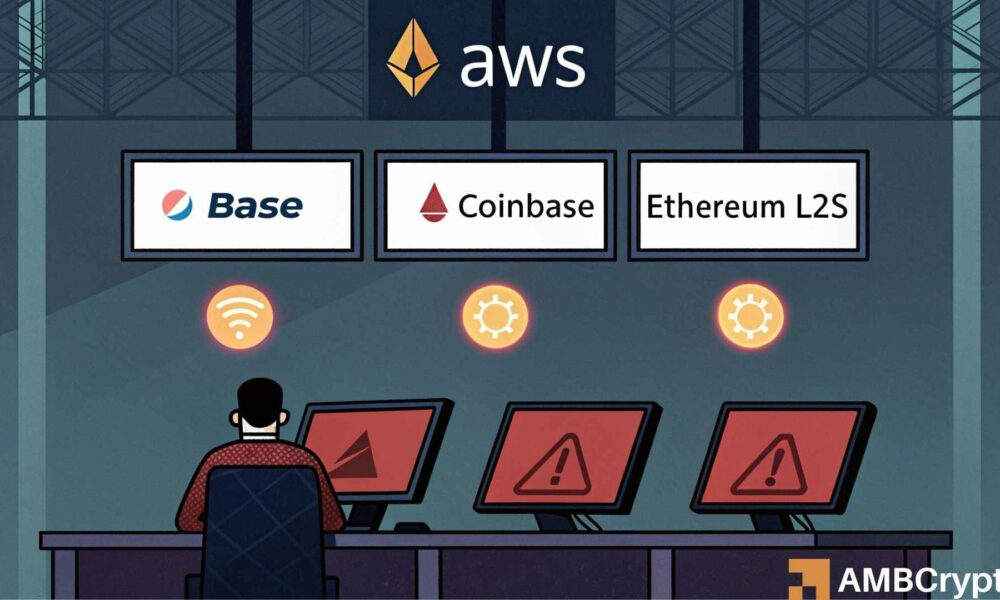The Impact of the AWS Outage on Crypto Apps: A Wake-Up Call for Decentralization?
Introduction
On October 20, 2023, an unexpected Amazon Web Services (AWS) outage sent shockwaves through the cryptocurrency world, revealing vulnerabilities within the Web3 ecosystem. This incident disrupted numerous applications, including Coinbase’s Ethereum Layer 2 solution, Base, and locked users out of their crypto wallets, significantly impacting trading activities. While AWS is crucial for many crypto platforms, this incident raises vital questions about the true decentralization of these technologies.
AWS’s Role in Crypto Infrastructure
The majority of crypto applications still heavily rely on AWS as their primary cloud provider for on-demand computational needs. This dependence has substantial implications for the perceived decentralization of these applications. Despite the idea of decentralization, the underlying infrastructure remains centralized, exposing protocols to risks associated with service outages. When AWS experienced downtime, not only did it affect centralized exchanges like Crypto.com, but it also disrupted non-custodial wallets such as MetaMask and multiple Ethereum Layer 2 solutions. As Infura reported, this reliance on a single provider led to widespread interruptions across the network.
User Frustration and Its Repercussions
The AWS outage left countless users facing the frustrating "zero balance" glitch, rendering various services temporarily inaccessible. Even after AWS resolved the issues, the damage was done. Social media was flooded with commentary about the lack of true decentralization. Comments like "So AWS went down, and half of crypto just stopped working," emphasized the discontent and anxiety among users. The incident illustrated that despite the decentralized nature of blockchain technology, reliance on centralized infrastructure can lead to significant risks and user distrust.
Resetting Market Dynamics
As AWS outages caused disruptions, they also influenced market dynamics. Prior to the outage, Bitcoin had seen a surge, climbing to over $110,000, only to be retraced sharply as trading activities plummeted. This ripple effect is typical in centralized exchanges that tend to drive sell-offs during moments of high friction. This raises the question: will this incident encourage cryptocurrency players to adopt Web3 alternatives to traditional cloud services, such as Akash Network (AKT)?
Future of Decentralized Cloud Services
Despite AWS’s significant role in the current crypto landscape, initiatives like Akash Network strive to offer Web3 alternatives. However, the uptake of these solutions has been relatively slow. The AWS outage may serve as a wake-up call for the crypto sector, encouraging developers and protocols to transition towards truly decentralized solutions. By prioritizing decentralized infrastructures, the crypto community could mitigate the risks associated with reliance on centralized providers. While the road to decentralization may be challenging, the AWS incident has undoubtedly highlighted its importance.
Conclusion
The recent AWS outage underlined a critical vulnerability in the cryptocurrency ecosystem’s reliance on centralized cloud services. It served as an important lesson for developers and users alike, emphasizing the need for a more resilient and genuinely decentralized infrastructure. Although the immediate effects have subsided, the conversations sparked by this incident may encourage a shift toward adopting decentralized alternatives, ultimately strengthening the integrity and trustworthiness of the Web3 ecosystem. As the hours progressed after AWS’s restoration, the future of crypto remained uncertain, but one thing was clear: the quest for true decentralization in blockchain technology has never been more urgent.


